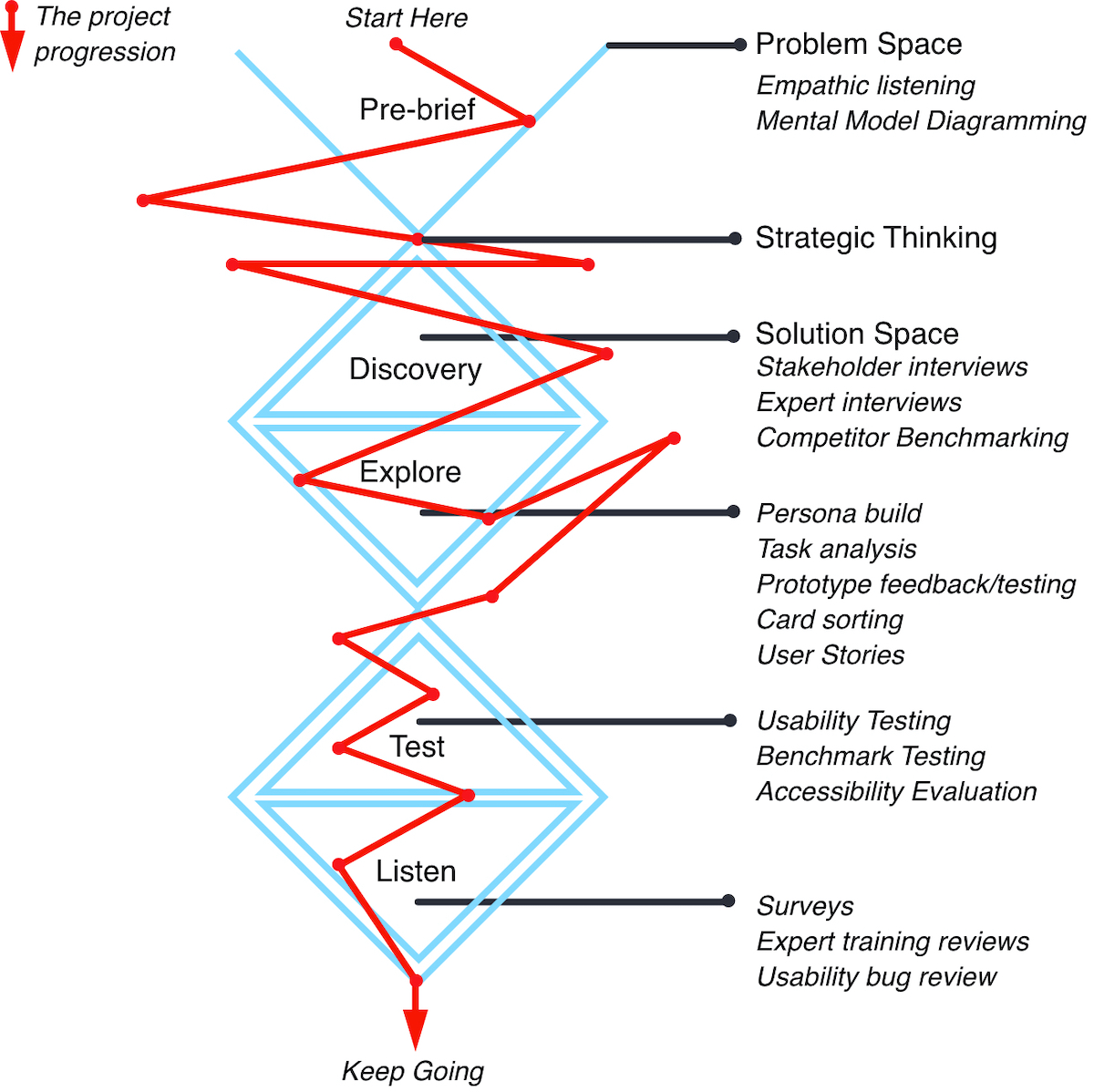My Research Process
As part of the product development team, my role as a UX Researcher is to provide timely and usable insights and storification of the data to inform decisions AND to steer the project back towards the shared understanding, a role that combines diligence, diplomacy and determination.

Quantitative research tells you what happened. Qualitative research tells you why it happened. I use a mixed methodology, which means the tools fit the research task, not vice versa.
After all, the person who goes into a hardware store isn’t looking for 8mm drill-bit, they’re looking to hang a picture.
The research methodology is the tool that supplies the answer.
I’ve worked on UX research briefs for which budget has been extremely limited (including approximately zero), but the expectations of usable results or feedback is assumed. Budget is less of a problem when there’s some time to optimise the methodology, be creative with recruitment, to test the test, run the study expeditiously, share with the team live and then produce data that can be translated into action.
When time is tight, but the expectations are the same as above my process is to establish why time is tight and then plan around that. My experience is that stakeholders assume quantitative studies are faster and yield better ‘numbers’ but are surprised that qual methods can be organised and executed quickly and yield richer insight.
I’ve not worked on a fully funded project yet in the UX space, although I’ve been involved with dozens of research projects in advertising, sports marketing and brand consulting so know the ‘form’.
Meanwhile, I’ve taken my tuition very seriously and outside the coursework, have taken on board the wise words, technical briefings and practical use of statistics of Erika Hall, Steve Portigal, Sauro & Lewis, Travis & Hodgson, Sam Ladner, Indi Young and others who have kindly published excellent books on UX Research. Everyone in the UX space also credits (or curses) A H Maslow so I guess I should too.
About half way through my studies, we had a task to perform usability testing on our prototype. So I invested my own money into a fully mobile usability testing ‘lab’*.
Nothing beats sitting with a participant, hearing them and seeing them as they attempt a series of task on a clickable prototype or MVP.
Having read Steve Portigal’s Interviewing Users, I totally subscribe to it being the Researcher’s job to put in the extra miles on every brief to recruit the best participants, to be totally flexible on when they can be available, go and see them in their community/workplace, make sure they are comfortable and confident with what they are doing and then give the best chance to properly observe their actions and not just their words.
Be professional, be courteous, be prepared, be flexible but then be humble and get out of the way of yourself and let the participant do their thing. Without prejudice, and let the analysis wait until the next stage.
* (with thanks to Michael Margolis)

Sometimes, it’s just not possible to sit with the participants, when oceans and timezones keep us apart
So I have a Lookback.io account for Remote In-Person Moderated interviews that is the best I can find on the market at present. It’s pricey but worth it if used regularly and efficiently. Allows you to see both the participant’s face and their device screen simultaneously, you can send them tasks in advance with password access so they don’t ‘peak’, they can see you at all times, other members of the team can dial in and watch live (and prompt me with questions if something occurs) but the whole interview is recorded and can be edited together with other interviews to cluster findings in a really compelling way for the debrief.
